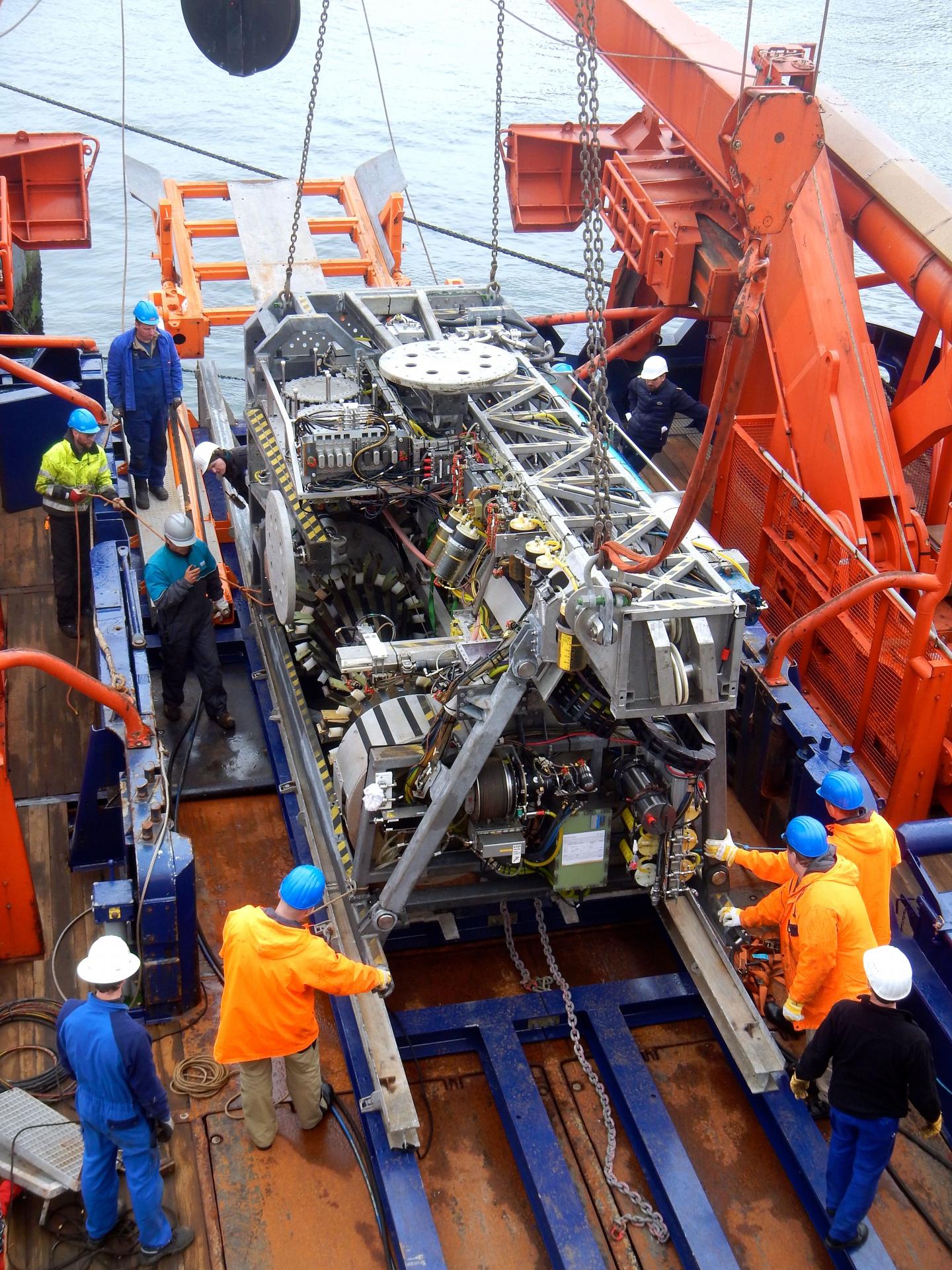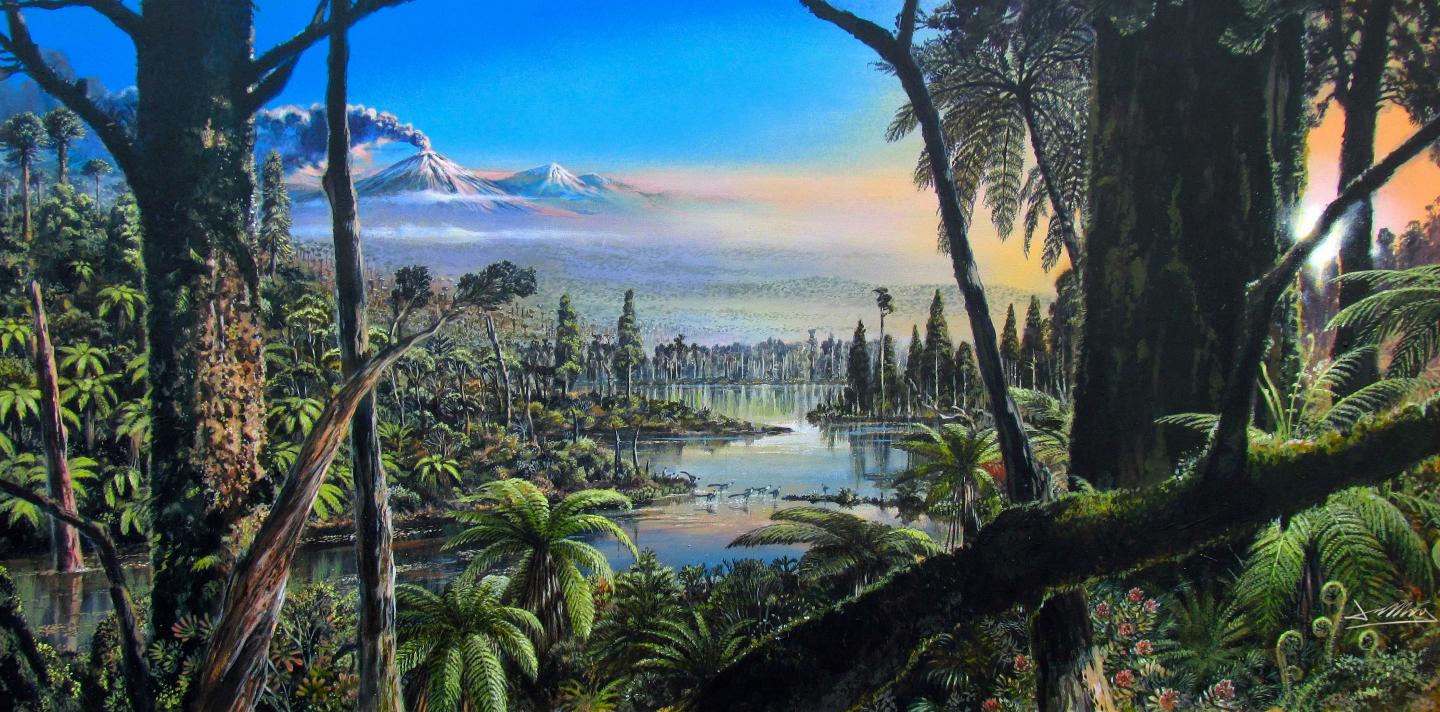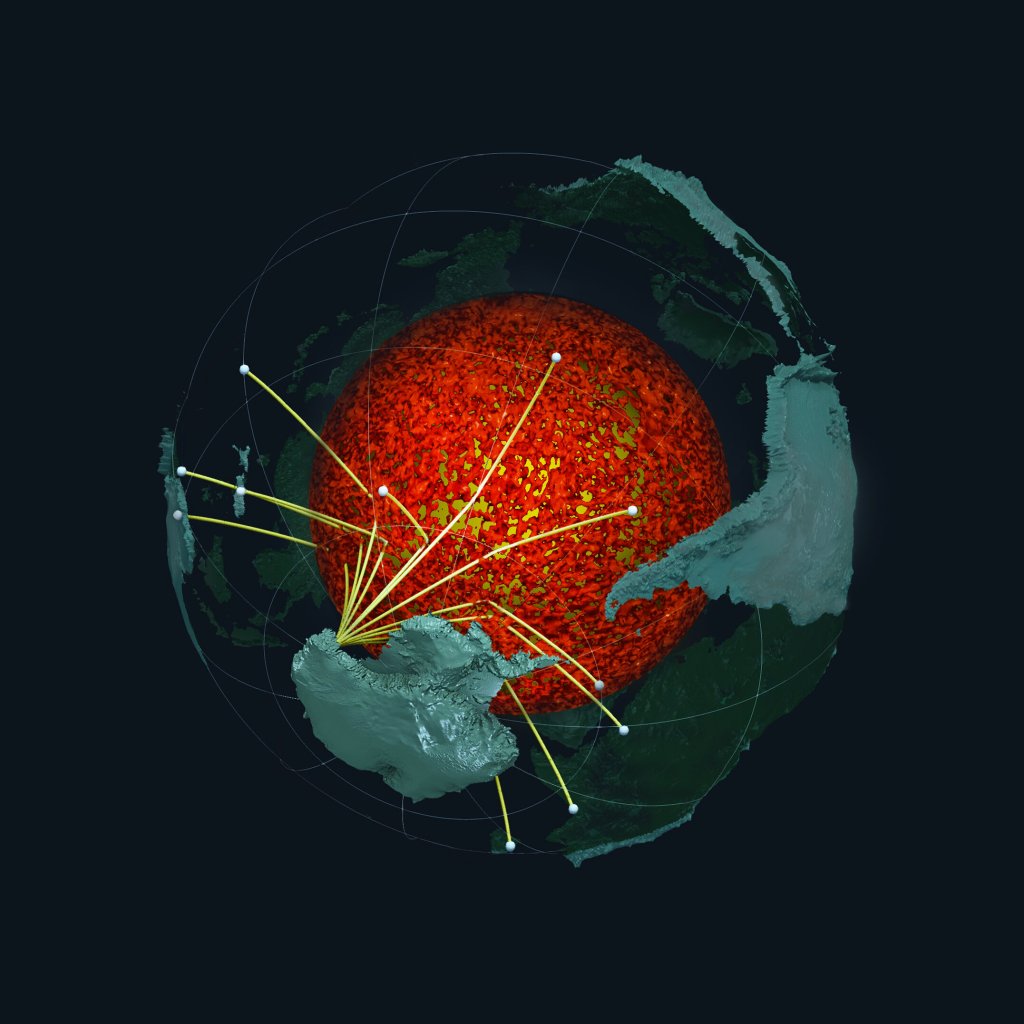Antarctica is the most remote and barren continent on Earth; a land where only the hardiest creatures can survive the punishing year-round conditions. But dial the clock back by 90 million years to the age of dinosaurs, and this icy landscape transforms into a lush temperate rainforest that somehow braved months of perpetual darkness.
The story of this ancient Antarctic rainforest is written in sediment buried 25 meters under the seafloor off Pine Island Glacier, according to a study published on Wednesday in Nature. The fossils preserved in an ultra-rare core represent the first glimpse of Cretaceous ecosystems at latitudes this far south, just 500 miles from the South Pole.
Videos by VICE
“It is definitely the southernmost Cretaceous evidence ever recovered on the planet,” said lead author Johann Klages, a geologist at the Alfred Wegener Institute Helmholtz Centre for Polar and Marine Research, in a call. “We were the first ones to ever drill there in that environment.”
Klages and his colleagues obtained the core during a 2017 expedition of the research vessel Polarstern, but the extraction process was not easy. The specialized drilling machine used to penetrate the seafloor required several days to pull out each new core, and all it seemed to be reaching was quartzitic sandstone layers bereft of fossils.

Meanwhile, ice sheets from the nearby island began advancing toward the sample site, threatening to slice the cord between the drill and the vessel. Before evacuating the area to prevent the loss of expensive equipment, Klages and his colleagues decided to take one last three-meter core.
Unlike the light-colored sandstone, this core was dark, suggesting it was rich in organic materials. “We immediately saw that something special was going on,” recalled Klages. “We saw these amazing, pristine, complete, dense networks of fossil roots in the core connected down to the core base.”
“If you go to the forest in front of your house, or somewhere, and you drill a hole, you would get something very similar,” he said. “It was full of pollen and spores and really diverse assemblages.”
Over the past three years, the team has meticulously examined the core and unraveled incredible new details about the rainforest that once blanketed Antarctica. The pristine condition of these plant fossils demonstrates that this was a swampy ecosystem of conifer trees that may have looked like the rainforests of modern New Zealand.
Based on comparisons with similar Cretaceous biomes found much farther north, dinosaurs may well have roamed through this biodiverse Antarctic landscape. “It’s very likely that there were insects and dinosaurs and all of that there too,” Klages said, “but we can’t say for sure because we did not find anything like that. We only can say a lot of stuff about the paleobotany that we found in the core.”
Remarkably, these forests were located at a southern latitude of 82°, which means they would have been plunged into total darkness for about four months of each year. Modern rainforests rely on perpetual sunlight to survive, but this bygone ecosystem had to switch to another source of energy for the long, black winter.

That fuel may have been supplied by extraordinarily high levels of atmospheric carbon dioxide, which could have staved the forests over until the return of the Sun. In fact, the discovery of this rainforest strongly suggests that CO2 levels in this era were higher than previously assumed, perhaps reaching 1,680 parts per million (ppm). For reference, our current CO2 levels are just above 400 ppm, though they are rapidly rising due to human activity.
These high CO2 levels imply that Cretaceous Earth was warmer than expected, and that no ice cover existed at the South Pole. Klages and his colleagues estimate that the mean annual temperature in the rainforest was about 12°C, with summer temperatures averaging around 19°C.
“It really was that warm,” Klages said. “That amazed us, of course, but also the climate modelers because no one expected such extreme values very close to the South Pole.”
“We are quite confident now in saying that there was no ice present, that Antarctica was completely vegetated, and that we had very high CO2 concentrations.”
The research offers a rare chance to imagine this strange Antarctic forestland, but it also contains lessons for our modern warming world. For instance, Klages and his colleagues modelled what would happen if the current version of Earth had the same CO2 levels, and found that our planet’s polar ice cover reflects too much sunlight to result in the same high global temperatures.
“The presence of an ice sheet makes a huge difference, even if you have very high CO2 concentrations,” Klages said. “That is really important for us to know, and to think about how we can better preserve ice sheets.”
“We need to look into these extreme climates that happened on the planet already, because they show us what a greenhouse climate looks like,” he concluded. “We are definitely in an interesting time because if we continue what we’re doing right now, then it could lead into something that we can’t control anymore.”




